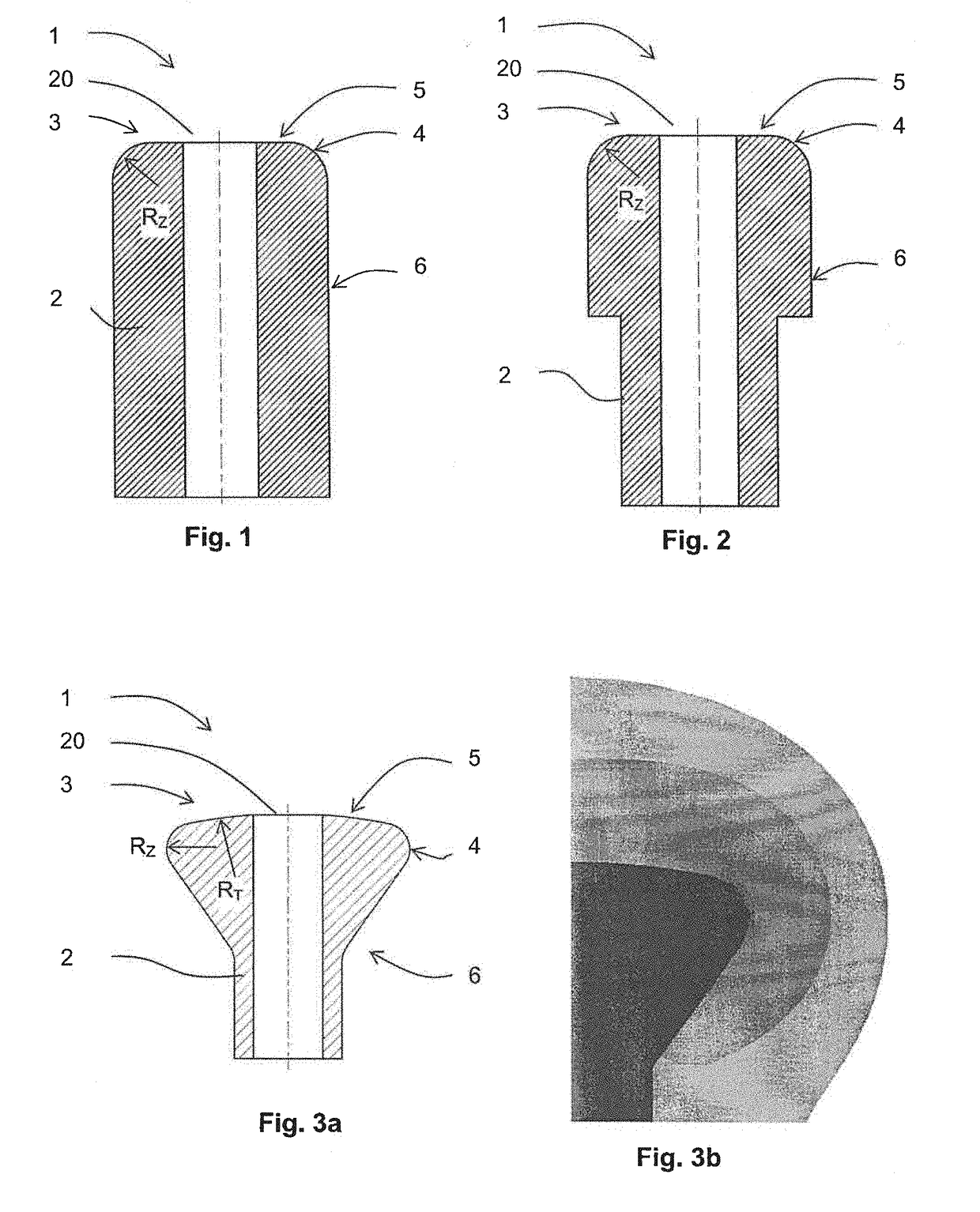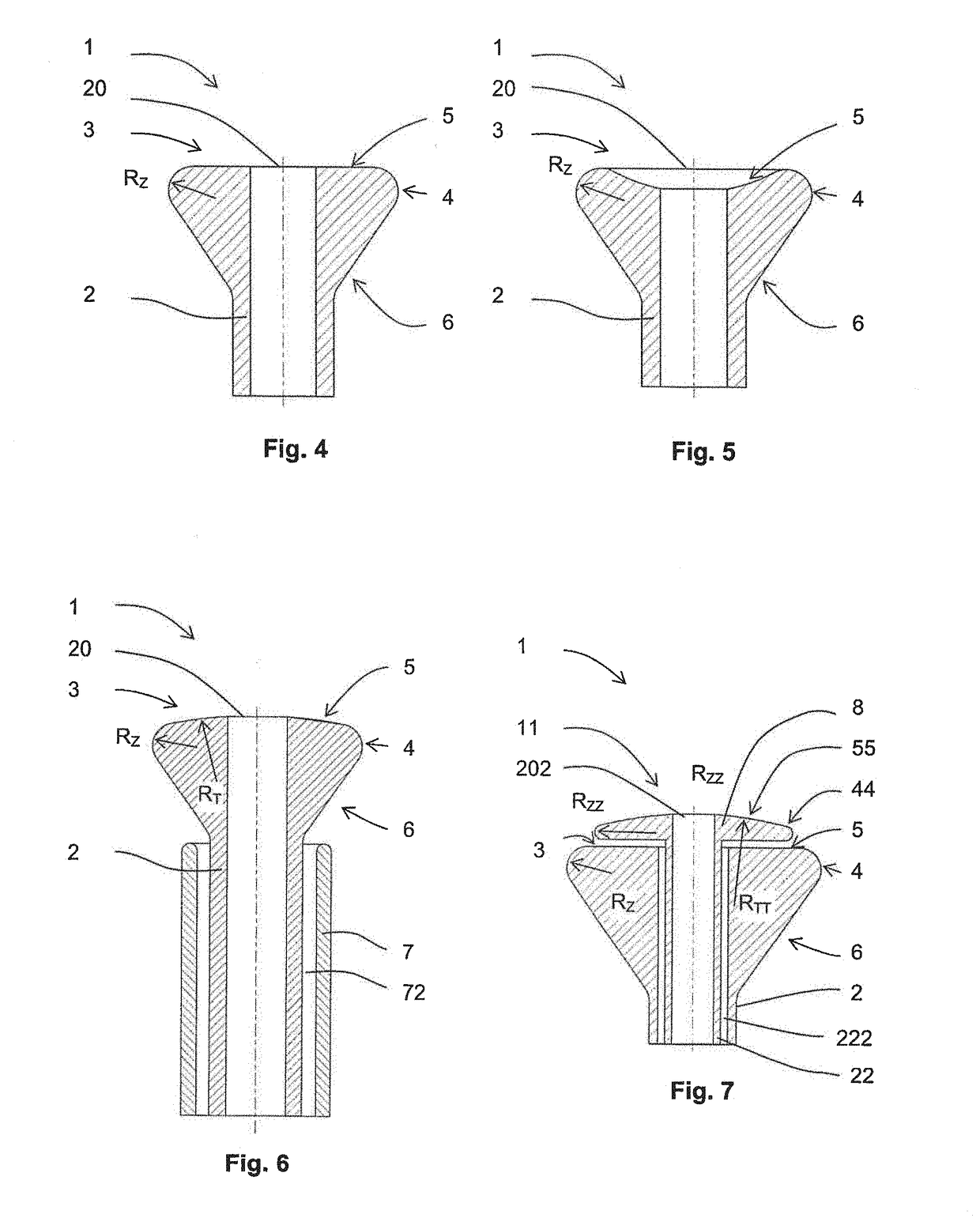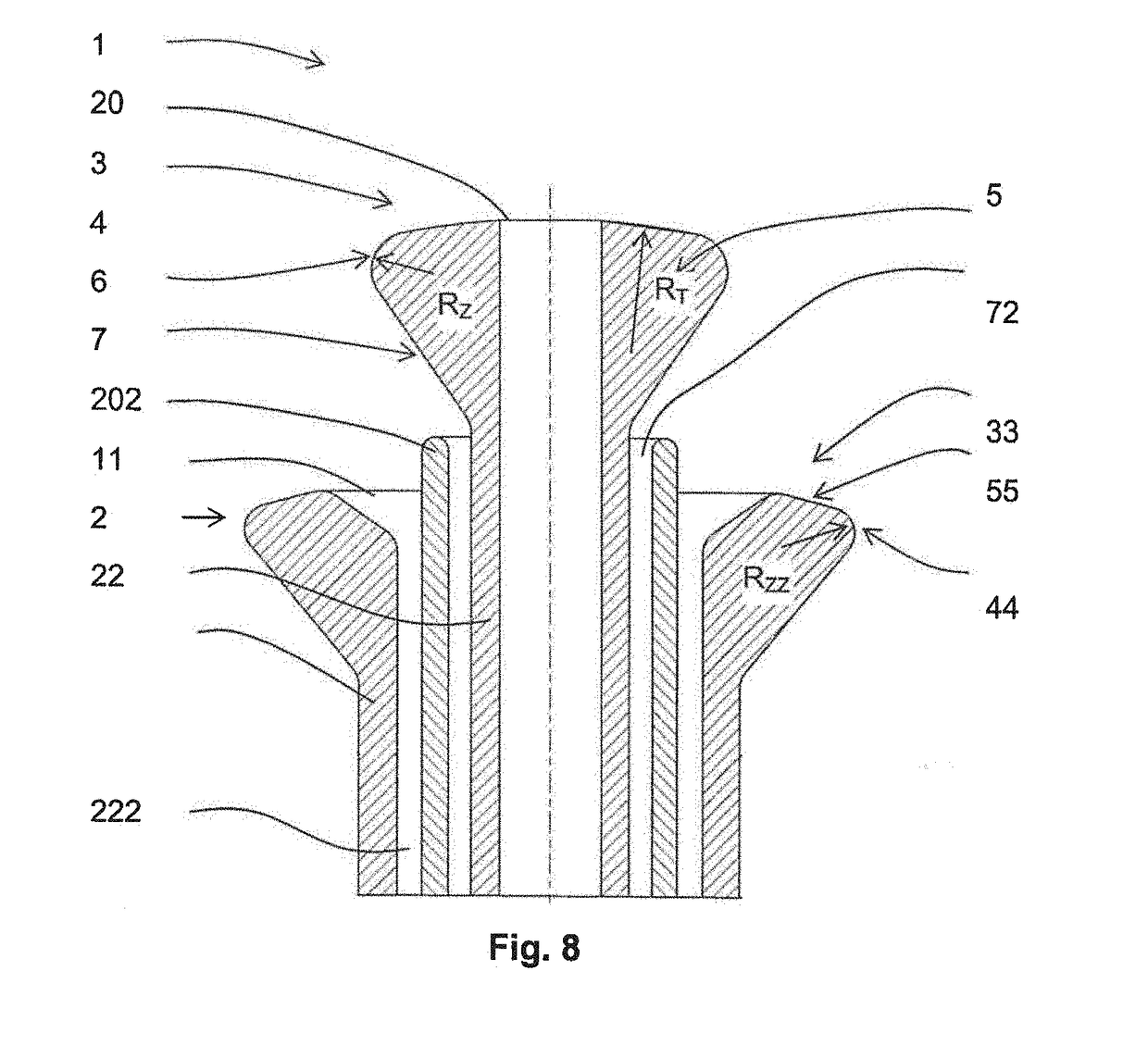Method for Producing Polymeric Nanofibers by Electrospinning of a Polymer Solution or Melt, a Spinning Electrode for Performing the Method and a Device for Producing Polymeric Nanofibers Equipped with at Least One such Spinning Electrode
a technology of polymer nanofibers and electrospinning, which is applied in the direction of electrospinning, filament/thread forming, textiles and paper, etc., can solve the problems of completely interrupting the spinning process, only having a very low reducing the spinning output of the electrode, so as to increase the amount of nanofibers and increase the surface area. , the effect of small varian
- Summary
- Abstract
- Description
- Claims
- Application Information
AI Technical Summary
Benefits of technology
Problems solved by technology
Method used
Image
Examples
embodiment
OF EMBODIMENT
[0037]The spinning electrode 1 according to the invention contains an inlet pipe 2 of a polymer solution or melt, which ends on its top face 3, whereby around at least a part of its mouth 20 is arranged a spinning surface 4, rounded downwards, which is primarily intended for spinning the polymer solution or melt, which is placed on it. The radius RZ of the rounding of the spinning surface 4 is designed in such a manner that greater electric field intensity is obtained on the spinning surface 4 of the spinning electrode for the production of polymeric nanofibers under the given conditions, or, more specifically, that critical minimum intensity of the electric field, during which spinning of the particular polymer solution or melt takes place, is obtained or exceeded, but at the same time without electrical breakdowns at this intensity.
[0038]In preferred variants of embodiment of the spinning electrode, the wall of the inlet pipe 2 of the polymer solution or melt extends ...
PUM
| Property | Measurement | Unit |
|---|---|---|
| diameter | aaaaa | aaaaa |
| diameter | aaaaa | aaaaa |
| distance | aaaaa | aaaaa |
Abstract
Description
Claims
Application Information
 Login to View More
Login to View More - R&D
- Intellectual Property
- Life Sciences
- Materials
- Tech Scout
- Unparalleled Data Quality
- Higher Quality Content
- 60% Fewer Hallucinations
Browse by: Latest US Patents, China's latest patents, Technical Efficacy Thesaurus, Application Domain, Technology Topic, Popular Technical Reports.
© 2025 PatSnap. All rights reserved.Legal|Privacy policy|Modern Slavery Act Transparency Statement|Sitemap|About US| Contact US: help@patsnap.com



